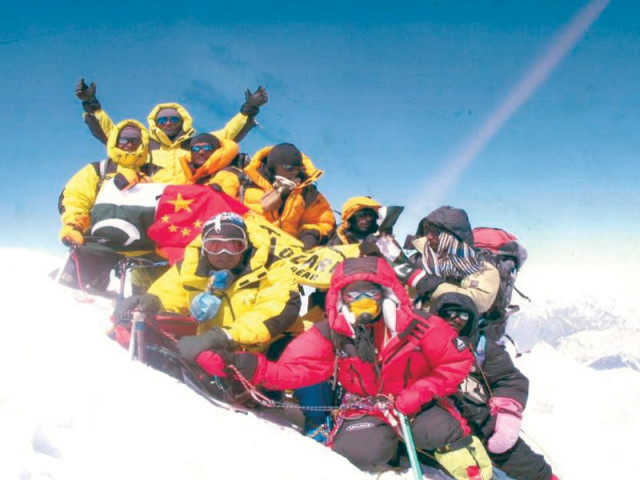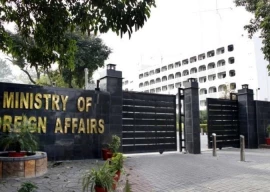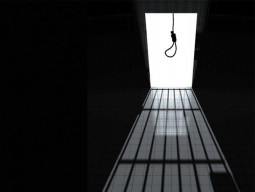
On March 9, 2012 Nisar Husain Sadpara, Pakistan’s youngest mountaineer, went missing while attempting to climb Gasherbrum 1 (G1) along with Gerfried Goschl from Austria and Cedric Hahlen from Switzerland.
The group had set off from base camp on March 7, at 6 am. The wind that blew was perhaps a shade too strong but the weather was comparatively clear and the team was waved off with enthusiastic smiles by the porters and helpers.
The three mountaineers continued their ascent despite the harsh weather: temperatures had plunged below minus 45 degrees and wind speed was reported to be 120 km per hour. Yet, the three reached an altitude of 7,700 metres on the 8,065 metre tall mountain and remained in contact with the base camp till 8.30 am on March 9. Then all contact was lost.
“When we failed to contact them, we approached Skardu and Islamabad, informing the tour operator about the gravity of situation,” says Iftikhar, who worked with the group as an assistant. At the base camp, the porters and helpers were worried but helpless. Nisar was loved by all those he had worked with and the porters, who knew him well, fretted about his fate.
The rescue operation, however, was hampered by the bad weather conditions. For several days a helicopter could not be arranged, but finally, an operation was launched led by the renowned climber Hasan Sadpara. After a gruelling three-hour search operation, the trio was declared dead on March 14.
A passion for climbing
It was a sad end for a young man who, quite literally, had mountaineering in his blood.
He was born in 1980 to a poor family in Sadpara village, located 14 km from Skardu. Nestled amid towering peaks, Sadpara village has produced many distinguished mountaineers — most notably Hassan Sadpara, the second Pakistani to scale Mount Everst — and most of the villagers are employed in fields related to climbing.
Husain’s father, Ali Sher, also worked as a porter with different mountaineering groups in pursuit of a livelihood. His 10-member family lived in a house with three rooms and cultivated crops on small pieces of land.
Nisar Hussain was admitted in the local primary school in the hope that getting an education would enable the family to break out of the cycle of poverty. Unfortunately, he could not continue with his education. Due to deteriorating health, his father had to abandon work and Nisar took to herding goats to ease his family’s financial burden.
A hard-working young boy, Nisar would often scale the peaks surrounding his village while herding goats and collecting wood. Challenging his fellow shepherds to climbing contests, he would soon leave them all behind while racing to the top.
As per the village custom, Nisar was married at the age of 18, in 1998, and had three children: 8-year-old Rashida, 3-year-old Rashid and little Marzia, who is only 18 months old.
As a boy, he was fond of hearing stories of epic mountaineering feats from his father and other relatives, and given his natural ability, climbing soon became a source of sustenance as well as a passion.
But it was thanks to an experienced mountaineer named Ali Raza that Nisar truly entered the field of professional mountaineering back in 1996.
Ali Raza, who became Nisar’s close friend and mentor, remembers that when he recommended Nisar for the position of a high altitude porter, the tour operator refused to accommodate him because of his inexperience. But on Ali’s insistence, Nisar was given the chance to become part of the expedition team. Thanks to Ali, he went on his first climbing adventure in 1996, accompanying a Pakistan Army expedition to the Sia Kangri mountain in the Karakoram range. Despite being only sixteen years old, he succeeded in reaching the summit, which was at the eye-watering height of 7,422m above sea level. From then on, Nisar collected many accolades and achieved the distinction of becoming the youngest mountaineer in Pakistan and the second youngest on an international level. He conquered five peaks that were higher than 8000 metres, including G1 (8,065m), G2 (8,035m), Broad Peak (8,047m) and K2 (8,611m).
National hero Hasan Sadpara also remembers Nisar fondly. “We climbed K2 together on 27 July 2004 and we hoisted the Pakistani flag on Gasherbrum 1 on 22 July 2006. It is a world record that we both scaled G1 and G2 within the span of a week.”
Unlike many professional climbers, he never used supplemental oxygen and never faced fitness or health problems during climbing. Working with world-renowned mountaineers like Lee Sang Bae from South Korea and Park Young Seok and Han Wang Young from China, he dreamt of setting up a mountaineering club to impart training to youngsters in Sadpara.
While he himself pursued mountaineering, Nisar gave his brother Kazim the money to establish a used shoe shop at Skardu. The uncertain law and order situation often hampered the influx of tourists in Pakistan and the war on terror left a deep impact on the income of those dependent on tourism for their livelihood. This shop was an additional source of income that could tide the family over during lean patches.
Despite the fact that Nisar himself had had to leave school at a young age, he wanted his brothers and his children to study. He sent his younger brother Hamid to Karachi for further education and Hamid, who is studying at Karachi University, used to take care of all of Nisar’s correspondence, maintain his website and Facebook profile. Hamid would keep Nisar informed about the mails and messages sent to him by friends and professionals.
The doomed expedition
Nisar came home in the first week of January from a trip to Islamabad, and his next plan was to proceed to G1 with the Gasherbrum 1 Winter International Expedition 2012. On January 5, Nisar set off to Askoli from Skardu despite his father’s insistence that he abandon the mission.
“I told him not to go since it was winter and I felt fearful for him. But he said that Gerfried, the group leader, was insisting that he accompany them and he could not refuse Gerfried,” said 72-year-old Ali Sher, his eyes welling up with tears at the memory of the obedient son who had dutifully borne all financial burdens following his own retirement.
Nisar and Gerfried had been friends since they had both undertaken an adventure mission in 2003, and had grown so close that Gerfried had even promised Nisar that he would accompany him to Nepal to climb Mount Everest.
Sadly, all these dreams died along with Gerfried and Nisar on the unforgiving peak of Gasherbrum.
Ali Sher had been fetching grass for his goats and sheep when he heard the sound of wailing coming from his home. His neighbours and relatives had brought the painful news of the disappearance of his son. The Gasherbrum 1 expedition has been disastrous, just as Ali Sher had feared.
Despite his sorrow, he kept the news from Nisar’s younger children, who were only told that their father was in Islamabad with foreigners and would be coming home soon.
What went wrong?
Nisar’s wasn’t the only group trying to scale Gasherbrum I. There was another group of three Polish mountaineers also attempting the feat of ascending the Hidden Peak in winter. The difference was that the Polish mountaineers approached the mountain from the northwest, while Nisar’s group adopted a southerly approach. While one group found glory, the other met death.
“Nisar and his team selected a very tough and risky route that had been abandoned for 25 years,” says Hasan Sadpara who led the rescue operation for the missing climbers on March 14.
After communications between the expedition and the base camp broke down on March 9, it took nearly one week to arrange for a helicopter and commence rescue operations. Even then, visibility was low and bad weather created hindrances.
This delay meant that the chances of finding the climbers, whether dead or alive, were very slim. The search operation lasted three and a half hours after which the missing mountaineers were declared dead. Hasan says he believes that Nisar, Gerfried and Cedric were blown off a ridge by strong winds and thrown into the China side of the border.
One can only speculate whether a more prompt response could have saved the missing mountaineers. In Pakistan, rescue operations are usually undertaken on a humanitarian or fraternal basis by other mountaineers, and no dedicated rescue teams or crews exist. Because of this, foreign mountaineering groups and trekkers largely avoid coming to Pakistan, depriving it of millions of dollars in foreign exchange. Despite this loss of income and lives, Hasan points out that no step has been taken by the government or tour operators to reverse the trend.
Ali Raza, while praising Nisar as being a dedicated and technically sound mountaineer, also laments the state of rescue operations in the country.
“It is appalling that rescue operations are not institutionalised in Pakistan, unlike in China and Nepal, where proper rescue operation teams have been set up with all the required equipment, helicopters and professional climbers,” complains Ali Raza.
The way things currently stand, it is the tour operators who are supposed to take the required rescue measures — assuming that the group has paid the fee before embarking upon climbing. Usually, the group pays the rescue fee in advance to tour operators and it is then mandatory for the tour operator to arrange rescue teams. The lone rescue helicopter, which is based in Skardu, can be used free of charge only for military purposes. For civilian and humanitarian purposes, a fee needs to be deposited with Askari Aviation.
But in this case, the tour operator was unable to arrange for rescue operations. Why?
According to Col (r) Manzoor, the president of the Alpine Club, he himself came forward to extend help for the rescue operation. He approached Askari Aviation, asking them to provide a helicopter but the tour operator had not deposited the required $10,000 to Askari Aviation before the climbers had started ascent and Askari Aviation refused to provide the helicopter.
The Alpine Club, says Col (r) Manzoor, then approached the Austrian Embassy for help and only on the request of the embassy did Askari Aviation provide the helicopter.
Ali, who runs Adventure Pakistan, the tour company which facilitated this doomed expedition, acknowledges that he could not arrange for a helicopter in a timely manner. But he has an explanation for why he did not deposit the fee in advance.
“In April 2012, Askari Aviation suddenly increased the deposit fee from $6000 to $10000 and the per hour fee from $3000 to $8100. In retaliation, the Association of Tour Operators had unanimously decided that nobody would deposit an advance to Askari Aviation unless they reviewed the fee structure,” said Ali.
Being a part of the association, Ali too abstained from depositing the fee in advance. However, he declared that the company would support Nisar’s family with an open heart and facilitate them in getting insurance money and other financial aid.
When contacted, Brigadier (retired) Javed, a general manager at Askari Aviation, simply reiterated that the tour companies were bound to deposit the money in advance.
“We provide rescue indication kits to mountaineers which they can use to call for help from any point on the peak. We got the approval to use the helicopter for the rescue from GHQ when the Austrian embassy guaranteed payment to Askari Aviation,” says Brigadier (r) Javed.
“Unfortunately,” he added, “the operations were in vain and no one could find any signs of the missing climbers.”
In recognition of his achievements, the Gilgit-Baltistan chief minister nominated Nisar Husain for a presidential award and promised to provide a job to one of his brothers. He also visited the Nisar’s home to pay his condolences to the bereaved family.
The brave mountaineer may no longer be among us, but his achievements and dedication have made him a hero who will always be remembered in the history of mountaineering in Pakistan. Still, one can only wonder whether a more fitting way to remember Nisar Sadpara could be to set up structures and services aimed at ensuring that no more lives are lost in the frozen peaks of the north.
Published in The Express Tribune, Sunday Magazine, April 22nd, 2012.


















COMMENTS
Comments are moderated and generally will be posted if they are on-topic and not abusive.
For more information, please see our Comments FAQ